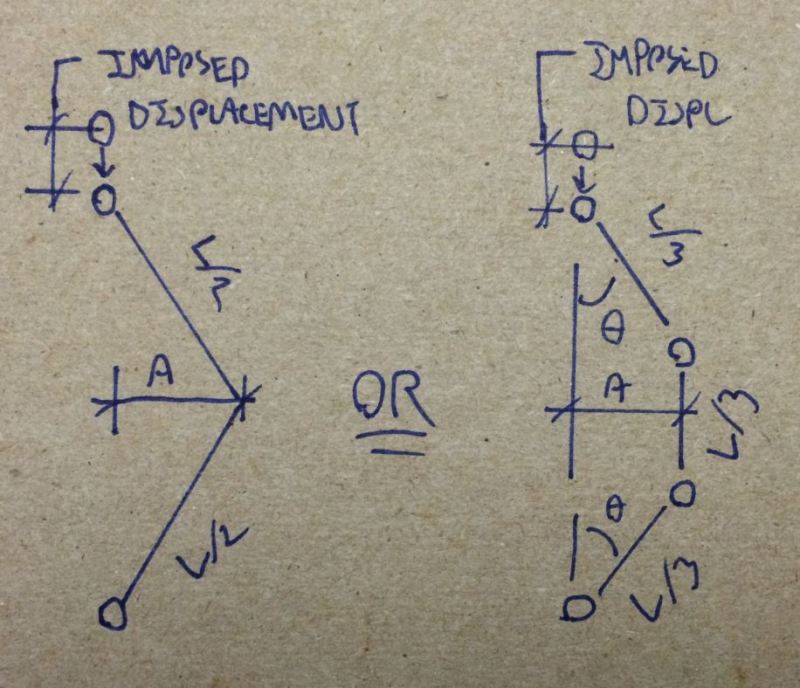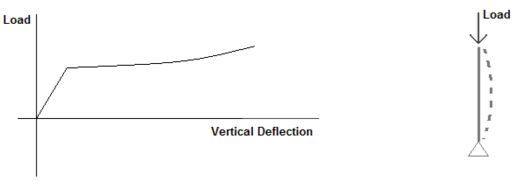The theoretically accurate solution:
1) You know the 1/2 wavelength for the sine curve = column length - imposed axial displacement. So you can get lambda in the sine wave equation.
2) You set up an equation for the arc length of a half sine wave and set it to the original length of the column.
3) You use the relation established in #2 to back calculate "A", the amplitude of the sine wave.
4) Now that you have lambda and "A", the shape of your sine curve is defined and your done.
Trouble is, there's no anti-derivative for the arc length of a sine wave. As such, you're forced to result to numerical methods like the one that BA mentioned.
Luckily, there's a much easier way that's sure to be sufficiently accurate for any practical situation. Use the imposed displacement and one of the models below to work out "A" in the sine wave equation. This replaces steps 2 & 3 above and get's you straight to a complete equation for estimating lateral displacement along the column.
I like to debate structural engineering theory -- a lot. If I challenge you on something, know that I'm doing so because I respect your opinion enough to either change it or adopt it.



